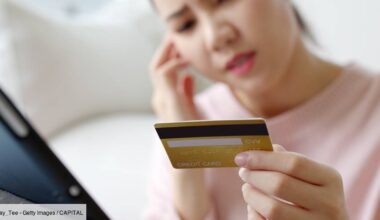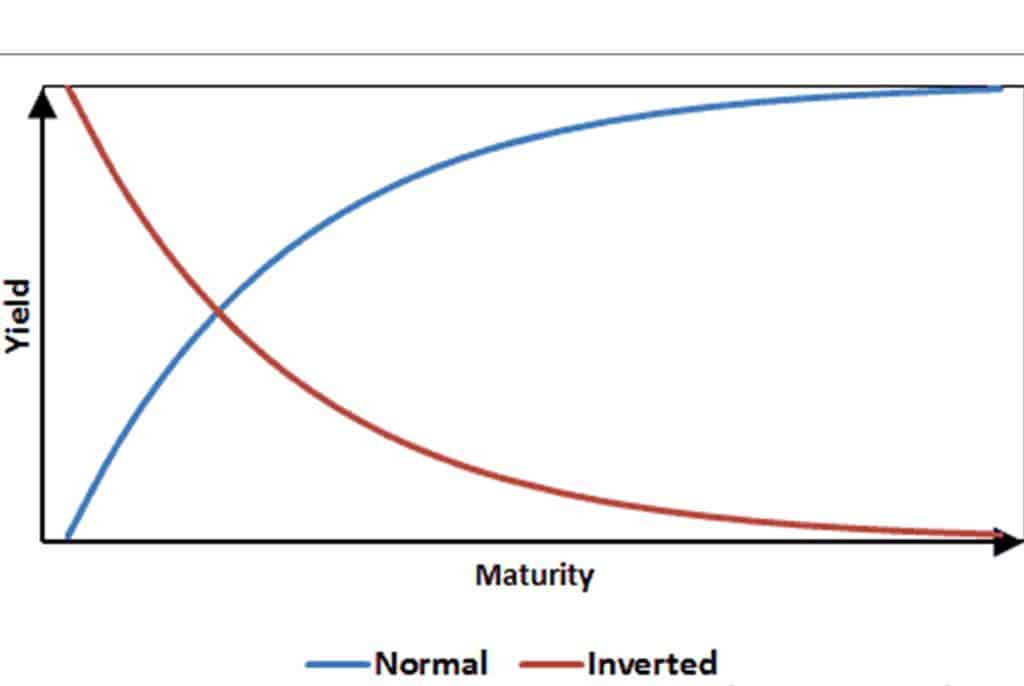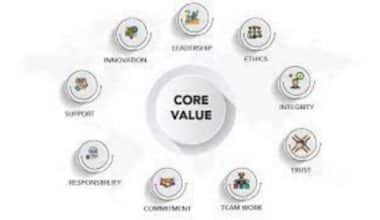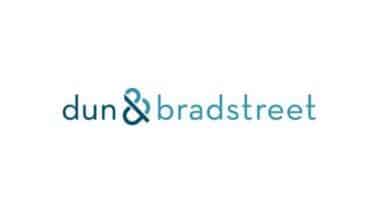Personal checks may be used to pay taxes, execute payments, or settle other people’s debts. However, there are times when you’ll need to give or receive payments using a cashier’s check. Cashier’s checks are more secure than personal checks, and they can be provided for a fee by both banks and credit unions. This article explains what cashier’s checks are, how they function, and why you should use them instead of other payment methods.
It also describes where to get Cashier’s check, how to get them, and their limits.
What is a Cashier’s check?
When you write a personal check to a company or an individual, the funds to pay it are usually come from your checking account. A cashier’s check, on the other hand, is a government-issued check that is drawn on the bank’s account.
In some financial conditions, such as when you need to make a large payment or are concerned about payment protection, cashier’s checks serve as the best payment method. The bank guarantees this form of payment, giving payees peace of mind that the check will not bounce due to insufficient funds.
How Do Cashier’s Checks Work?
When you ask for a cashier’s check, the bank first examines your account to see if you have enough money to cover the sum you need to pay.The money is then taken out of your savings and deposited into the bank’s. A fee may be charged by the bank for issuing a cashier’s check on your behalf.
The bank then prints the cashier’s check, which includes the payee’s name and the sum in question.However, instead of your bank account and routing number, the bank’s own account number will be written at the bottom.The funds used to pay the cashier’s check are then drawn from the bank’s account when the payee deposits it.
What is the Purpose of a Cashier’s Check?
Despite the availability of more modern alternatives, cashier’s checks are still widely used for large payments.Cashier’s checks are one of the best ways to accept payment, assuming the check is valid.
They are also relatively inexpensive which is one of the reasons why it’s still in vogue. Other reasons include:
Funds are guaranteed
Before printing a cashier’s check, banks and credit unions receive funds. The bank either takes money out of the customer’s account or demands cash from the person who requests the check. Banks set aside the money and can therefore guarantee that the check will clear. This gives the recipient, who is often selling something, a sense of security. A personal check, on the other hand, can only clear if the funds in the check writer’s account are available at the time the receiver attempts to deposit or cash the check
Advantages and Disadvantages
When it comes to purchases, cashier’s checks have a number of advantages, but there are a few drawbacks to be aware of. Here’s a short rundown of the benefits and drawbacks.
The Benefits
- Payment is safe and stable: You don’t have to worry about the check being returned for insufficient funds. The funds are charged against the bank’s account and guaranteed by the bank. As a result, you’ll be able to prevent overdraft and returned payment fees.
- Faster availability of funds: When it comes to determining when deposits will clear, banks use funds availability policies. For example, it can take up to five business days for certain payments to clear, or longer for larger deposits. However, since cashier’s checks are guaranteed, they have a shorter hold time than personal checks.
- The level of security is high: A cashier’s check reduces the risk of check fraud since it can only be cashed by the individual to whom it was given. To avoid them from being fraudulently duplicated, cashier’s checks usually include enhanced security features such as watermarks.
The Drawbacks
- They aren’t without flaws: While cashier’s checks are more reliable than other forms of checks, they are still vulnerable to fraud. Scammers can make apparently genuine-looking cashier’s checks to pay you with. Most times, you only get to find out when you attempt to deposit them at your bank.
- It often comes with a fee: While some banks may offer free cashier’s checks, it may not apply to you. This advantage, often times, only apply to those who have a premium checking account. But for the most part, a cashier’s check comes with a fee of about $10.
- You must go to your bank’s branch: If you need to make a payment outside of normal banking hours, this could be difficult. Attempting to purchase a car on a Saturday, for example, will necessitate waiting until Monday if your bank does not have weekend or evening hours.
How to get a Cashier’s Check
Your bank or credit union will provide you with cashier’s checks. However, you will need to follow the steps below.
Make a Check Request
Inquire about the conditions for ordering a check through your bank. You’ll usually need to have cleared funds in your account or deliver cash to the bank.
- In person: You can get a check given at most brick-and-mortar banks. Getting a check from them takes only takes a few minutes. In other words, you should be able to pay the receiver right away.
- Online: You can request cashier’s checks from some banks, especially online banks. But since these banks can only send checks to your mailing address, you must wait for the check to arrive before forwarding it to the ultimate payee. However, ensure the mailing address on your checking account is valid so it doesn’t go to the wrong one.
Prepare yourself
It’s almost impossible to get a check issued to you without some details in place. These details depend on the financial institution in question. So make enquires and get them ready.
Check amount
You must tell the bank the exact amount of the check. This is because that amount will eventually reflect on the check and cannot be changed. So it’s important to have the exact amount.
Payee
Indicate the payee’s name (the person or business the check should be payable to).
Other information
On the check, you should have a “memo” or notes. You might, for example, include your account number or a reference number.
Remember to carry valid identification (a driver’s license, passport, or other government-issued ID) while visiting a bank branch in person.
Fees
Cashier’s checks will cost you a small fee. Usually, banks and credit unions charge about $10 per check. You’ll need additional cash or funds in your account to cover that expense.
When a Cashier’s Check is Lost or Stolen, What Happens?
If someone pays you with a cashier’s check, it’s essential to keep track of it so you can deposit it at your bank. When you receive a cashier’s check from your bank to pay someone else, the same rules apply.
That’s because replacing a cashier’s check that’s been misplaced or stolen isn’t always easy. If you lose a cashier’s check that you ordered from your bank, they can require you to obtain an indemnity bond for the check’s amount before issuing a replacement. This simply assures the bank that if the missing check is found, they will not have to cover the bill on both checks.
While this may seem to be a straightforward process, obtaining an indemnity bond from an insurance provider may take some time. To allow the original cashier’s check time to be identified, the bank may also require you to wait 30 to 90 days before issuing a replacement cashier’s check. If you do need to make a payment but don’t have enough money in your account to cover a new cashier’s fee, this can be inconvenient.
double-check
Where to Get Cashier’s Check?
You can obtain a cashier’s check in one of three ways: from a bank, a credit union, or online.
A check can be purchased from a bank teller. You’ll need identification as well as other pertinent details. These details include check’s amount, the payee’s correct spelling, as well as any memo notes. This is because, you can’t add anything in handwriting. Every information is printed on the check. You can’t cross anything out either. If you have an account with the bank, the requested sum is transferred from your personal account to the bank’s own account. You may be able to pay in cash if you don’t have a bank account. The check is ready to use as soon as the teller prints and signs it.
However, remember that most banks only issue cashier’s checks to their own customers. If you don’t have a bank account, call ahead to make sure It’s available before going to the bank.
Credit Union
Having a cashier’s check from a credit union works similarly. One distinction is that can be obtained from almost every credit union, whether or not you are a member.
Online
The final choice is to order a cashier’s check via the internet. This varies by location, but most banks will only make this choice available to their customers. The bank will deliver a physical check to your mailing address if you demand a cashier’s check online. As a result, it is your duty to deliver it to the intended recipient. While this saves you a trip to the bank, it still takes longer because you must rely on the mail.
Additional fees are often associated with the purchase of a cashier’s check. You may be required to pay a fee of up to $10 or a percentage of the check amount, depending on the banking institution.
Money Orders and Cashier’s Checks: What’s the Difference?
The cost and location of purchase are the main differences between cashier’s checks and money orders. Money orders are usually available in smaller amounts, can be purchased at a variety of locations, and cost only a few dollars. Cashier’s checks, on the other hand, are often given in large quantities, can be obtained from the bank, and are somewhat more expensive to obtain.
Here’s some stuff about the discrepancies between the two payment methods, depending on what you’re using the money for:
A money order is basically a pre-paid piece of paper that you get in return for cash, similar to a check. You can use them to transfer money to others, and the recipients can deposit it into their bank accounts quickly. Money orders are available at a variety of locations, including the post office, Walmart, Western Union, numerous supermarkets and convenience stores. Money orders cost only a few bucks and can generally be accessed for sums up to $1,000.
A cashier’s check is similar to a money order, but is issued by a bank and includes a bank account. When you receive a cashier’s check, the bank will either retain or withdraw the funds from your account and issue you a bank-issued check in the sum you specify. Cashier’s checks are similar to money orders and personal checks in that the funds are guaranteed by a bank and have already been deducted from the account, allowing recipients direct access to the funds. Although more costly than money orders, cashier’s checks are more reliable because they are backed by a bank, and they can still be issued for a few dollars—typically under $10.
How Does a Cashiers Check Work?
A cashier’s check is a check that is made out to the bank instead of to you. It is signed by a teller and written in the name of the bank. The bank is in charge of giving the check to the person who wrote it. You take the money from your account and give it to the bank to cover the check.
How Do You Get a Cashiers Check?
You can get cashier’s checks at banks and credit unions, usually where you already have an account. It’s a good idea to have your ID, the name and address of the person or business you’re paying, and the amount of the check ready. You might have to pay a fee
Why Would Someone Use a Cashier’s Check?
Most of the time, cashier’s checks are used to pay for big purchases. Even though the rules can vary from bank to bank, there is usually no maximum amount for a cashier’s check. With a cashier’s check, the payee can usually get a bigger amount of money faster.
How Much Does a Cashier’s Check Cost?
Most traditional banks charge between $10 and $15 for a cashier’s check. Some banks don’t charge some account holders the fee. For example, Bank of America charges its checking and savings account customers $15 for a cashier’s check, but account holders who meet certain balance requirements don’t have to pay the fee.
Do Cashiers Checks Clear Immediately?
If certain requirements are met, federal regulations require banks to make funds deposited by cashier’s, certified, or teller’s checks available for withdrawal no later than the next business day after the depositing banking day, the same as for cash deposits.
- Check Card: How to Check Card Visa, American Express, Stimulus (+ free tips)
- ENDORSE A CHECK: How to Endorse a Check to Someone Hitch-free
- BACK OF CHECK: How to Sign, What to Write & Wrong Endorsement Solutions
- How to Endorse a Check for Mobile Deposit: All you Should Know
- How To Enter A Bounced Check In QuickBooks- Expert Guide
- Insufficient Funds: A Definitive 2023 guide {updated}






